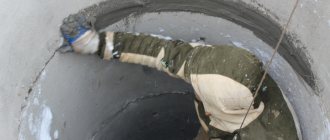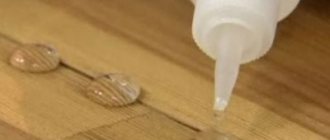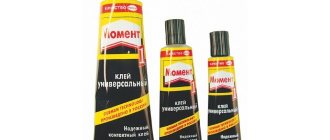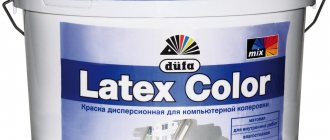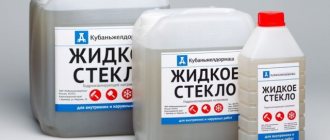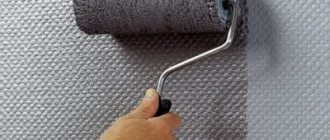DIY liquid glass products.
Vases, plates, chandeliers, mobiles, as if made from pieces of the rainbow; watches sparkling in the rays of electricity; panels that come to life from the playful sunlight; aroma lamps with a heart-light flickering in mysterious incredible colors on the walls; stained glass windows, decorations that no one else has and from which it is difficult to take your eyes off... And now you can proudly say: “These are my products from liquid glass, made with my own hands!” And now you don’t have to master the difficult and generally harmful profession of glassblowing in order to make unique, fragile, fascinating decorations for your home, for yourself, as a gift for loved ones and friends, New Year’s decorations for the Christmas tree, etc. The passion for crafts made from liquid glass is gaining momentum and attracts more and more creative people with a subtle sense of style and beauty.
Liquid glass: history and composition
Even if you are not involved in construction, you have come across liquid glass more than once in your life, because it is a well-known silicate glue. Surprisingly, this glue was invented more than 200 years ago, and to this day its composition remains unchanged.
The inventor of liquid glass is the German scientist Jan Nepomuk von Fuchs, who combined silicic acid with alkali silicates. As a result, a transparent viscous mixture was born, which, when hardened, turned into a solid transparent substance.
In the old days, glass melting furnaces were used to produce liquid glass. In them, quartz sand was melted under the influence of high temperatures, mixing it with coal and sodium sulfate or, alternatively, with soda. Today, for the industrial production of liquid glass, an autoclave is used - a specialized apparatus that combines quartz sand with alkalis under high pressure and shifts the boiling point of the mixture upward, thereby ensuring higher physical properties of the material.
Now ask yourself why, even after 200 years, liquid glass remains one of the most popular materials in the construction industry? Obviously, the whole point is in its unique properties and the versatility of its application. Let's take a closer look at them.
Recommendations for using liquid glass
How to use liquid glass when waterproofing surfaces? Step-by-step instructions include following the following steps:
- The surface is thoroughly cleaned of existing contaminants.
- The primer mixture is applied using a brush or roller.
- After half an hour, a second layer of primer is added. It is important to maintain an even distribution of the mixture on the surface.
- A protective solution is prepared based on a cement-sand mixture and liquid glass.
- Using a spatula, the solution is applied to the surface in a thin layer.
Important! When performing work, it is recommended to use personal protective equipment - overalls, goggles and rubber gloves.
The material has a long service life at low temperatures, so it can be stored outdoors in winter.
Due to its high efficiency, this material has a wide range of uses. Thus, potassium-based soluble glass is used to insulate foundations, while sodium-based soluble glass is used to protect concrete buildings, hydraulic structures, in gardening and in the domestic sphere.
Having an idea of how to make liquid glass and protective compositions based on it, you can solve issues with waterproofing various types of surfaces.
New products appear on the construction market every day: manufacturers improve the technical characteristics of existing mixtures, paints and insulation materials, or even develop unique recipes. But some materials are not affected by general modernization - their composition remains unchanged for decades. These “mammoths” include liquid glass, which is used in many household and industrial areas.
Characteristics of liquid glass
Let's see what properties liquid glass has:
- Hydrophobic - perfectly repels moisture, protecting other materials and structures from the destructive effects of water;
- Antistatic - neutralizes static electricity;
- Fireproof - does not burn, protects treated surfaces from fire;
- Thermal insulation - perfectly retains heat;
- Antiseptic - actively fights fungi and mold, prevents their spread;
- The properties of the hardener are that it perfectly fills cracks and pores in various surfaces, from concrete and stone to wood.
Characteristics
ZhS is a material of a viscous, viscous consistency, which dries quickly in air and forms a monolithic, durable, water-impervious base.
Liquid glass, sodium and potassium, have the following characteristics:
- Prevents water from penetrating through the surface treated with the solution.
- Protects wooden and concrete surfaces from the penetration of fungus and pathogens.
- Prevents the accumulation of static voltage.
- Protects the treated surface from fire.
- Protects the base impregnated with the solution from the effects of acidic compounds.
- Helps accelerate the drying process and strength gain of cement mortars.
Processing concrete and wood products with liquid glass has been used for quite some time. This substance is added to cement, which speeds up the process of setting the mixture; it is used for waterproofing basements, for treating swimming pools and other hydraulic structures.
Liquid glass in its original state resembles transparent or whitish crystals obtained by melting soda and silicon dioxide in certain proportions under pressure. This material was invented in the 19th century and is still actively used in construction and renovation work due to its unique properties.
Types of liquid glass
As mentioned above, the basis of liquid glass is a silicate solution. Depending on which alkaline additive predominates in the composition (sodium silicate Na2O(SiO2)n or potassium silicate K2O(SiO2)n), the resulting product - sodium or potassium liquid glass - depends. In isolated cases, manufacturers produce liquid glass based on lithium silicate Li2O(SiO2)n. Let's look at the two main types that you can find on the shelves of construction supermarkets.
Liquid sodium glass
This material is a thick liquid with a slight grayish tint. This product is famous for its astringent properties, thanks to which excellent adhesive solutions and mixtures for waterproofing are prepared on its basis. If you need to give additional protection to the foundation, protect the basement from moisture penetration, increase the strength of the concrete structure and make it fireproof, sodium liquid glass will be the best choice.
Liquid potassium glass
An alternative to the sodium composition can be potassium silicate. True, this viscous, viscous, transparent liquid with a greenish tint has a higher cost. Why? Simply having all the characteristics of sodium silicate, potassium-based liquid glass is an insurmountable obstacle to bacteria and fungi, successfully resists the effects of acids and reliably protects any surface, including wood, from rain, fog and other atmospheric influences. In addition, this material is used for the manufacture of varnishes and paints, giving them a characteristic glossy shine.
Preparation of solutions based on liquid glass
Having decided what glass is in liquid form, you can consider options for preparing the most popular solutions based on it.
Primer solution
A primer mixture can be prepared from liquid glass for treating various types of substrates. To do this, the following proportions are observed:
- 2 parts cement;
- 2 pieces of glass.
The required amount of water is added to the cement, then glass is introduced. The ingredients are mixed with a construction mixer until a viscous mixture is obtained. How long does it take for the finished mixture to dry? The curing time is 35 minutes, so surface treatment begins after preparing the mixture. For application use a soft brush or roller.
Application areas of liquid glass
It is not surprising that, having such a variety of properties, liquid glass is used in a wide variety of industrial sectors. For example:
- Ferrous metallurgy. This material is often used as a binding component. It is sprayed onto welding electrodes and is also used in the manufacture of casting molds and ceramic fluxes.
— Mechanical engineering production. Liquid glass is used for delicate joining of parts, as well as for the preparation of non-stick paints.
— Construction industry. Production of heat-resistant materials (concrete and mortars), zeolites and catalysts.
- Chemical industry. This material is used for the preparation of varnishes and paints, detergents and cleaning products (including washing powders). In addition, this material is used to protect parts from acids.
— Pulp and paper industry. Liquid glass is used for the production and gluing of textiles, paper and cellulose. With its addition, the paper acquires additional hardness and glossy shine.
By the way, each of us has known silicate glue since childhood, which, in fact, is liquid glass. This glue perfectly glues paper, cardboard and wood.
However, given the ability of liquid silicate to withstand moisture, fire, high and low temperatures, as well as the high degree of adhesion of this substance, the largest area of application for liquid glass remains construction.
No. 2. The main pros and cons of liquid glass
Liquid glass is very often used for waterproofing work. This is due to a number of its advantages :
- excellent water-repellent properties, the film is solid, so moisture has no access to the material;
- liquid glass penetrates perfectly into pores and cracks and has high adhesion to the base;
- low consumption, especially when adding a substance to cement mortar;
- low price compared to other waterproofing materials;
- the substance can be used at high humidity;
- relatively high durability. Liquid glass will last at least 5 years, and if it is coated with paint, then much longer. Without additional protection, it is capable of gradually self-destructing;
- Liquid glass makes the material resistant to fire, acids, alkalis, mold, and increases the strength of the base.
However, this material also has its disadvantages :
- limited scope of application. The material is compatible only with concrete and wood. You cannot apply such waterproofing to a brick - it will destroy the material. When they talk about the versatility of liquid glass, they mean that the composition can be used to create coating waterproofing and to add to concrete, and its different concentrations in the solution allow one to obtain different properties;
- Liquid glass, like regular glass, is a little fragile and becomes so when it hardens. To prevent the layer from being damaged, it is additionally protected from above with another material;
- It is almost impossible to apply a finishing finish on top of liquid glass - paints and varnishes do not stick to it at all;
- it is very important to maintain the correct proportions when adding liquid glass to the cement mortar, otherwise it may harden too quickly;
- Although the installation process cannot be called specific, and special tools are not required, certain skills will still be needed. You can do all the work yourself only if you have experience in waterproofing. You will have to act very quickly, since liquid glass sets almost instantly.
In one form or another, liquid glass has been used in construction for more than 200 years . During this time, humanity has managed to come up with other waterproofing materials, but liquid glass still withstands competition.
Liquid glass is practically not used as an independent waterproofing material - only in conjunction with other materials , but only thanks to it is it possible to achieve excellent results and completely protect concrete and wood from moisture.
The variety of applications of liquid glass in construction
— Waterproofing of underground structures, basements, tunnels, wells and basements.
— Protection of concrete foundations. It is used in cases where the foundation of the building is located near groundwater.
— Waterproofing of ceilings, floors and walls in rooms. Used to protect against moisture penetration, mold and mildew.
— Laying ceramic tiles, as well as fixing stone and other finishing materials.
— Waterproofing of swimming pools. Applying this material to the concrete surface of the pool bottom creates a glossy, water-repellent shell.
— Grouting joints between tiles and decorative stone. This treatment provides bactericidal protection to the surface and prevents the formation of mold and mildew in these areas.
— Waterproofing of wells. This treatment with liquid glass prevents the destruction of concrete rings and prevents the surface of the well from becoming overgrown with fungus even after years of use.
— Cement mortar with the addition of liquid glass is an ideal means for building paths and pouring blind areas in a summer cottage. Such paths and blind areas do not crumble even after 8-10 years of use.
— The silicate mixture is added to the mortar for laying stove bricks. This allows you to protect the masonry from cracks when exposed to strong heat.
— To paint a wooden house and other wooden buildings, liquid glass is combined with chromium oxide, red lead or ocher. The resulting coloring solutions are perfectly washable and do not fade in the sun even after years!
— Wooden walls, floors and ceilings, incl. It is recommended to treat the surfaces of attic spaces with a mixture of silicate and water. In this case, a film forms on the surface, reliably protecting the wood from fungus, mold and dampness.
— By saturating the concrete floor surface in an apartment, house or garage with a mixture of water and liquid glass, you will forever rid your floor of cement dust.
Note! Silicate is not applied to ordinary building bricks, because when the silicate mixture interacts with the porous structure of the brick, the latter is destroyed over time.
The use of silicate in building mixtures
As you can see, most often liquid glass is added to cement mortars. Such ready-made mixtures are ideal for the following work:
- Treatment of walls, ceilings and floors in rooms located below ground level;
- Construction of foundations for buildings located near groundwater and reservoirs;
- Construction of premises operating in conditions of high humidity (swimming pools, saunas and baths);
- Creation of a decorative pond on a personal plot;
- Lining chimneys made of stone or concrete, outside the building.
How to prepare a solution with liquid glass
Obviously, based on the nature of the intended work and the quality required of the surface, the mixture applied to it will differ. Next, we will consider the preparation of solutions based on liquid glass:
— Waterproofing solution. To prepare a solution that provides reliable protection against moisture penetration, you will need to prepare a mixture of cement, sifted river sand and silicate glue. The proportions of the components are 1:1:1. It is only important to remember that without adding water, such a mixture dries extremely quickly, which means that it must be distributed over the surface in 15-20 minutes.
- Primer. This solution is ideal for surface pre-treatment. It protects it from moisture, atmospheric influences and temperature changes, and at the same time facilitates easy application of the main protective layer. To prepare such a solution, you need to dilute the cement in water, and then add liquid glass. The proportions of cement and silicate are 1:1, and there should be enough water so that the resulting mixture can be easily worked with a brush or roller.
- Antiseptic. To treat wood, protecting it from rotting and fungus, you need to mix liquid glass with water in equal proportions, and then treat the surface with this product. By the way, this solution is suitable not only for treating wooden surfaces. It perfectly protects concrete, stone and plastered surfaces from mold.
— Fireproof solution. To prepare a solution that can provide fire protection, mix Portland cement, river sand and silicate in a ratio of 1:3:2. This composition is excellent for laying stoves and fireplaces.
Important! Carefully monitor the proportions of the prepared solutions. An increase in the amount of silicate can cause the concrete to dry out and the structure to collapse.
— Strengthening the foundations. To give the surface strength, protecting it from damage and moisture penetration, experts recommend diluting 400 g of silicate glue in 1 liter of water. To strengthen the surface, the solution must be applied in layers, allowing each layer to dry for at least 3 hours. This solution is suitable for application to concrete porches, street paths and blind areas around the house.
Note! To ensure a homogeneous mixture, it is highly recommended to use a construction mixer. In addition, to prepare the solution you need to use drinking water (technical water is not suitable due to the presence of impurities in it).
By the way, a universal recipe for preparing a protective and waterproofing solution is to add 1 liter of liquid glass to 10 liters of building mixture.
Important! If it is necessary to waterproof the floor, walls and ceiling of the basement, sodium silicate is added to the cement mortar. If it is necessary to protect the outer surfaces of the foundation or building from the appearance of fungus and mold, it is better to use potassium silicate.
How to make glue with your own hands - instructions
Despite its cheapness, you can not buy liquid glass, but make it yourself. This is usually done by craftsmen or those who have access to the components, and the product is required in large quantities. You will need silicic acid, potassium and sodium silicates in finished form. The procedure is as follows:
- combine metal silicates in equal parts;
- take a 10% acid solution or dilute the substance to the desired strength yourself;
- add acid to silicates so that the mass is covered with liquid;
- put the mixture on the fire, cook at a low boil for 10 minutes, remembering to stir constantly;
- Cool the finished glue and pour it into tightly screwed packaging.
When cooking the mixture, you need to wear safety glasses and gloves. You cannot use kitchen utensils for this purpose; it is better to take one that you don’t mind throwing away.
Use of liquid glass in everyday life
— When doing plumbing work, you can easily use this silicate mixture as a sealant. Simply apply liquid glass to the surfaces of the pipes to be connected and, having connected them, hold for several minutes. With such a “helper” you can easily fix both plumbing and sewerage!
— The material in question provides reliable fixation of the floor covering, for example, linoleum or carpet. Typically, this fixation also provides protection against fungus. Alternative fixatives, such as PVA glue or Bustilat, are not able to provide such protection.
— In public spaces, such as theaters and cultural centers, curtains and curtains are treated with impregnation based on liquid glass. This allows you to protect these materials from fire, thereby avoiding a fire.
— Using liquid glass, it is easy to glue various materials, for example, clay or ceramic products, wooden blocks, leather, rubber, cardboard, plywood, fiberboard or chipboard sheets.
Important! Liquid glass should not be used to glue dishes intended for eating.
— The silicate mixture allows you to return burnt pots and pans to their original appearance. To do this, add a piece of liquid glass to boiling water (proportion 1:25), after which the burnt dishes are dipped into this mixture and boiled for 2 hours. Having taken out such a pot or frying pan, you can easily remove carbon deposits using a regular sponge. Alternatively, you can add shavings of laundry soap or a spoonful of soda ash to the composition. In this case, the carbon deposits will be removed even easier. Cleaning glass or porcelain can be done even faster this way. To do this, just immerse the dishes in a boiling solution for literally 10 minutes.
— When cutting branches from trees in the garden, the cuts are often lubricated with liquid silicate. This protective layer holds up much better than clay and reliably protects the tree from the effects of parasites.
Advantages of liquid glass
The long-term use of this amazing material in construction has made it possible to highlight a number of valuable advantages that are worth paying close attention to. So, liquid glass:
- Ideally covers the surface of concrete and wood, penetrating into the narrowest cracks. In terms of these properties, silicate is not inferior to, and even superior to, various varnishes and paints.
- Acceptable price. It boasts a more reasonable price compared to other impregnations and synthetic adhesives. In addition, the solution is packaged in containers of various volumes (0.5 to 10 l), which allows the buyer to purchase the required amount of liquid glass without overpaying.
- The service life of the liquid glass layer is about 5 years. If you apply several layers of waterproofing to the surface, this material will last even longer.
- High adhesive properties. Due to its high adhesive properties, this material can be easily used in conditions of high humidity.
- Increases the strength of the material. The application of liquid glass increases the strength characteristics of materials and increases their resistance to low and high temperatures.
- Environmental friendliness of the material. This product is one of the most environmentally friendly building materials.
Mixing instructions
In order to properly prepare a mixture with the addition of ZhS, you should follow the recommendations developed for compositions used to perform certain types of surface treatment and repair.
The dry components of the solution are mixed separately, and the liquid solution is also diluted separately with water. Add the dry components to the aqueous solution gradually, mixing the layers. If you want to make the mixture more plastic, increase the volume of water.
Subsequent application of liquid glass to the treated areas should be carried out taking into account finishing technologies.
Disadvantages of liquid glass
Despite the huge advantage of this silicate in comparison with other adhesive solutions, it also has disadvantages that should also be taken into account before use:
- Fragile film. The film that this building material forms is quite fragile, and therefore to obtain a reliable surface it is advisable to combine several types of waterproofing protection.
- Brick buildings are not suitable for treatment with liquid glass , either in its pure form or as part of a building mixture. Otherwise, the brick structure may be destroyed.
- Cannot be applied to organic surfaces. The composition in question is not applied to organic surfaces, as well as to materials that contain organic matter.
- Paint and varnish coatings cannot be applied to the surfaces of liquid glass. When one silicate solution is applied to the surface, a smooth film is formed, on which it is impossible to apply paint and varnish coatings. They simply will not stick to such a surface.
- The rapid drying of the material requires clear and precise actions to apply silicate, and therefore it will be difficult for a non-professional to cope with such a task. Need to practice.
What can be made from this material
Artists and creative craftsmen have long used epoxy glue for a variety of products and crafts.
It glues almost any surface (paper, glass, ceramics, rubber, wood, etc.). Protects from moisture and dust. Craftsmen even use it in its pure form as a building material for making household and household items.
Options for using ZhS:
- Surface treatment. Sculptures and crafts made of plaster, wood, and cardboard need protection from external adverse factors. By covering them with layers of epoxy, you can not be afraid of rain, wind, bad weather, fungi, mold.
- Use as glue. Due to its excellent adhesive properties, it penetrates deeply into the surfaces to be bonded and reliably adheres to them.
- Glass jewelry, crafts, figurines. Liquid glass for creativity is a flight of imagination.
- Tabletop, bench, chairs, stools. You can make a tabletop with your own hands. You need to take the base for your future countertop. It can be wooden, plastic or any suitable material. Make legs or a stand for it. Then treat with silicate and wait until it dries completely.
Make sure the previous coat is completely dry before applying the second and subsequent coats.
Instructions for treating surfaces with liquid glass
1. Clean the surface required for treatment from dirt and dust. Any contamination, including old coating, debris and dirt, will significantly impair the ability of liquid glass to be absorbed into the surface.
2. Prepare a silicate-based primer and apply the mixture to the surface using a roller or brush. This layer should be absorbed.
3. After an hour, apply a second coat of primer. This time period is enough for the previous layer to be completely absorbed and dry. Unlike the first, the second layer will lay down as an even film.
4. Prepare the waterproofing mixture and spread it over the surface with a spatula within 15-20 minutes.
5. After completing the work, thoroughly wash your hands and all tools that came into contact with these mixtures.
Important! Liquid glass is not added to the finished solution! First, silicate glue is diluted with water, and then cement powder and sand are mixed in.
Photos of craft options
You can find many options for RC products on the Internet. To make your item truly unique and inimitable, you will have to use your imagination. You can experiment with shapes, sizes, color shades.
Candlestick made of coffee beans
- Create a candlestick shape.
- Prepare the mold or base.
- Coat the mold with liquid glass (you can use regular office glue or PVA for this).
- Quickly, before the glue hardens, lay out the coffee beans.
- Wait for it to dry
- Top with one or more coats of epoxy to secure, protect, and shine.
Instead of coffee beans, you can use any bulk material. For example, cereals, sugar, multi-colored decorative sand, and much more.
Various figures
Select the shape of the figure you want to make. Mix the adhesive with paints of a suitable color. Fill out the forms, allow time to harden (from 15-20 minutes depending on the thickness of the layer). Take out the frozen figures and fasten them together using fishing line or wire.
Is it possible to make liquid glass yourself?
You will be surprised, but this material can be prepared at home! True, not everything is so simple. There are several options for preparing the necessary material, each of which should be considered separately.
Option 1. It is enough to dilute crushed silica gel in water, add soda to it and mix the ingredients until smooth to obtain a mixture with characteristics similar to liquid glass. True, this recipe has a significant drawback. Its cost will be significantly higher than ready-made liquid glass in jars.
Option 2. Purely theoretically, to prepare this material, you can mix quartz sand with soda in a ratio of 1:4, and bring the mixture to the melting point. True, melting quartz sand at home is extremely problematic.
Option 3. Persons who need to apply a moisture-proof coating to car headlights can be offered the preparation of an effective product based on a paraffin candle and white spirit. True, it will no longer be liquid glass.
To prepare the product, pour a grated candle with white spirit in a ratio of 1:3. The solution is heated and thoroughly mixed until smooth, after which it is applied to the surface of the headlights and rubbed into a non-silk cloth.
Terms of use
It is most convenient to apply silicate glue using a brush or spray bottle. The latter method not only makes the work easier, but also reduces costs due to the uniformity of the adhesive seam. In industry, some parts are coated with liquid glass by dipping.
Features of the composition are as follows:
- All surfaces should be thoroughly degreased and free of dirt and dust;
- the base must be level and smooth;
- if necessary, prime the products 1-2 times, let the primer dry completely;
- apply a layer of glue, without drops or drips, without missing sections;
- if the dimensions of the product are significant, apply a second layer of glue after the first has dried for a while and only then fasten it;
- Leave the product to dry completely without moving or touching.
If plaster or cement mixture is being prepared for pouring, the adhesive composition is introduced into it in a volume of 25% of the total mass. First, the cement-sand mixture is diluted, and only then liquid glass is added to it. To make an antiseptic coating, silicate glue 1:1 is poured into the primer, after which the product is applied to the walls, floor, and ceiling.
Precautions when working with liquid glass
- It is advisable to wear protective clothing, goggles and gloves when working with liquid glass.
- Liquid glass has a smell that not everyone likes. However, it does not cause toxic damage.
- This is a caustic product that can cause a burn to the cornea if it comes into contact with the eyes. That is why it is necessary to wear safety glasses when working with it. If liquid glass does get into your eyes, you should immediately rinse them with plenty of water.
- At cold temperatures, liquid glass freezes. However, after thawing, all the properties of this material return.
- During long-term storage, a white precipitate may appear at the bottom of a jar of liquid glass. However, it does not affect the properties of the material in any way.
- Liquid glass should be stored in a tightly closed container and out of the reach of children, because in its liquid state the silicate mixture is fire and explosive!
- Pay attention to shelf life. The instructions for use indicate that the shelf life of this product does not exceed 12 months. In this case, liquid glass should be stored in a tightly closed container.
Concluding the article, I would like to say that liquid glass is an amazing material that comes to the aid of a person in various areas of life, from building a house or cottage, to solving everyday issues. Having this inexpensive and convenient product on hand, you can make your home as dry, warm and cozy as possible! But more importantly, thanks to liquid glass, your home will be reliably protected from fungus, mold, fires and destruction!
Waterproofing with liquid glass
Waterproofing mixtures using JS make it possible to treat any structures, including concrete and wood, in established areas with humidity exceeding the norm.
Foundation
To protect the foundation from destruction in a humid environment, it is necessary to apply liquid glass for concrete. The instructions for use indicate that for maximum protection this operation should be performed twice. After application, the layer must dry completely, then apply the next one. After the concrete base is impregnated with glass, the insulation is reinforced with other technical materials. To eliminate cracks and mask the joining seams, prepare a repair composition in the following ratio: cement - 1 kg, water 750 ml, ZhS - 50 grams. To ensure better protection of the concrete base, it is recommended to use ZhS in the form of an additive in a volume of 5% of the total mass of the mixture.
swimming pool
To eliminate leaks in the bathtub of a structure, it is necessary to treat the surface of the concrete. The solution is evenly applied to the walls and floor of the structure. After one layer has dried, apply the next one. To reliably protect the structure, it is recommended to impregnate it three times.

